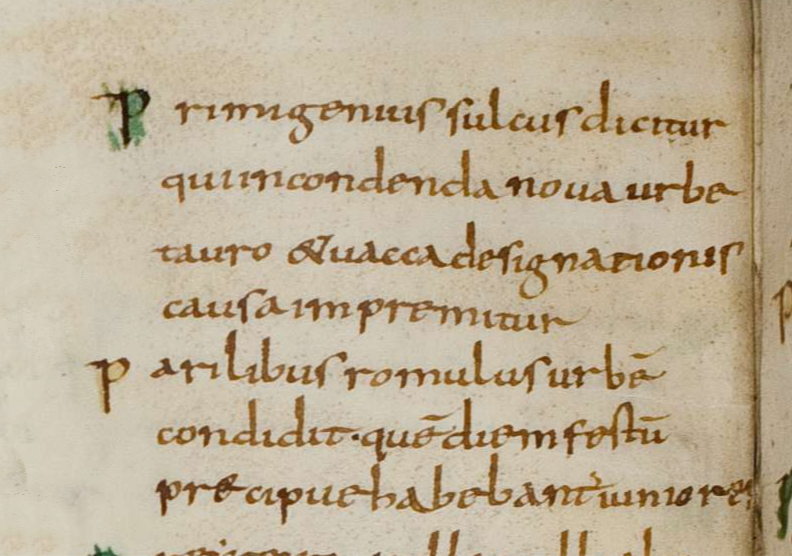Arca Ferrata
- sulla80

- Apr 13, 2024
- 3 min read
Updated: Sep 16, 2024
Henri de Longpérier, in his book about "money containers", detailed two excellently preserved chests discovered in Pompeii in 1868.
"The boxes were found in the courtyard of these houses, leaning against a column on the right side. They rested on a small masonry base to which they were fixed by a large iron nail or pin which, crossing the bottom of the furniture, kept it securely attached to the floor. This precaution shows quite clearly that the boxes of Pompeii were intended to contain money and other precious things, and that they could not be confused with the trunks used for transport, or even for movement within the household."
-Henri de Longpérier, 1868, p.59Here is one of the two boxes illustrated by de Longpérier on Plate XX.
Andersson (2022) reports 30 chests have been found in Pompei. This cassaforte (safe or strongbox) is found in the Archeological Museum in Naples:
A arca ferrata (iron covered wood chest) with divine busts, 1st Century AD, Naples, National Museum of Archaeology (inventory number 73022). Image from Restituzioni 2016.
Although many of the chests were destroyed over time, the bases can be found with their iron bolts:
These chests would store money and valuable goods and could be found in temples, stores, and the houses of rich families, who displayed them in the atrium of the house to show off their wealth.
Mutua viginti sestertia forte rogabam,
Quae vel donanti non grave munus erat.
Quippe rogabatur felixque vetusque sodalis
Et cuius laxas arca flagellat opes.
Is mihi 'Dives eris, si causas egeris' inquit.
Quod peto da, Gai: non peto consilium.
-Martial, Epigrammata, 2.30Translation: I happened to ask a loan of twenty thousand sesterces, it was not a difficult ask. He of whom I asked was a prosperous friend, whose arca (chest) overflows with his ample wealth. He says to me: “You’ll be a rich man if you plead cases.” Give me what I ask, Gaius; I’m not asking advice.
An arca ferrata with three money bags sitting on top, can be seen on this beautiful coin with excellent details from Pamphylia with Trebonianus Gallus on the obverse.

Roman Provincial, Pamphylia, Perge.,Trebonianus Gallus (251-253), diassarion (Bronze, 21 mm, 5.79 g, 11 h)
Obv: ΑΥ•Κ Γ•ΟΥЄΙ•ΤΡЄ•ΓΑΛΛΟΝ Laureate, draped and cuirassed bust of Trebonianus Gallus to right, seen from behind; below, globe
Rev: ΠЄPΓAIΩN Three-legged chest with folding doors, with three money purses upon it
Ref: RPC IX 1119. SNG von Aulock 4714
This reverse used consistently across many years in Perge, as it was provincial center for the Roman treasury. There are coins in ACSearch for the following emperors and their family.
Maximinus I Thrax AD 235-238
Maximus. Caesar, AD 235/6-238
Gordian III AD 238-244
Philip II (Caesar, 244-247)
Herennius Etruscus (251)
Volusian (251-253)
Gallienus (253-268)
Salonina (Augusta, 254-268)
There may be others known. I only find 2 in ACSearch of this coin from Trebonianus Gallus. Only 4 are known in RPC and this coin has particularly nice detail.
Pamphylia is literally the land of "all tribes or races" -
Trebonianus Gallus (June 251 to August 253) was only emperor a bit more than two years before he was overthrown by Aemilianus who only reigned 3 months before being overthrown by Valerian. Here's a coin of Aemilianed, a vexillum and standard type that was struck by towns on the routes of the Roman armies as
they marched through Asia Minor to and from the eastern front. The S.R. has been debated with Barbara Levick giving a convincing argument for Senatus Romanus (a shorter variant of SPQR).

Pisidia, Antioch, Aemilian (253), AE
Obv: IMP C M AEM AEMILLIANO AVG, radiate, draped and cuirassed bust right.
Rev: ANTIOCHI OCL A / S - R. Vexillum surmounted by eagle; signum to left and right.
Ref: RPC IX 1299; McClean 8967.
Condition: Very fine. Weight: 5.95 g. Diameter: 24 mm.
References
Henri de Longpérier (1868). "Recherches sur les insignes de la questure et sur les récipients monétaires", Didier, 95 pages.
Andersson, E. The Economic Centre of Pompeii Revealed by Roman Cash Keeping from Sessions 2–3, Single Contributions, Heidelberg: Propylaeum, 2022 (Archaeology and Economy in the Ancient World: Proceedings of the 19th International Congress of Classical Archaeology, Cologne/Bonn 2018, Band 53).
"Area vesuviana: Cassaforte con sacrificio a Giove. I secolo dC", Revista Restituzioni, 2016. http://www.restituzioni.com/wp-content/uploads/2016/04/2016.cat_.06.pdf
Levick, Barbara. “The Coinage of Pisidian Antioch in the Thrid Century A.D.” The Numismatic Chronicle (1966-), vol. 6, 1966, pp. 47–59.





Comments